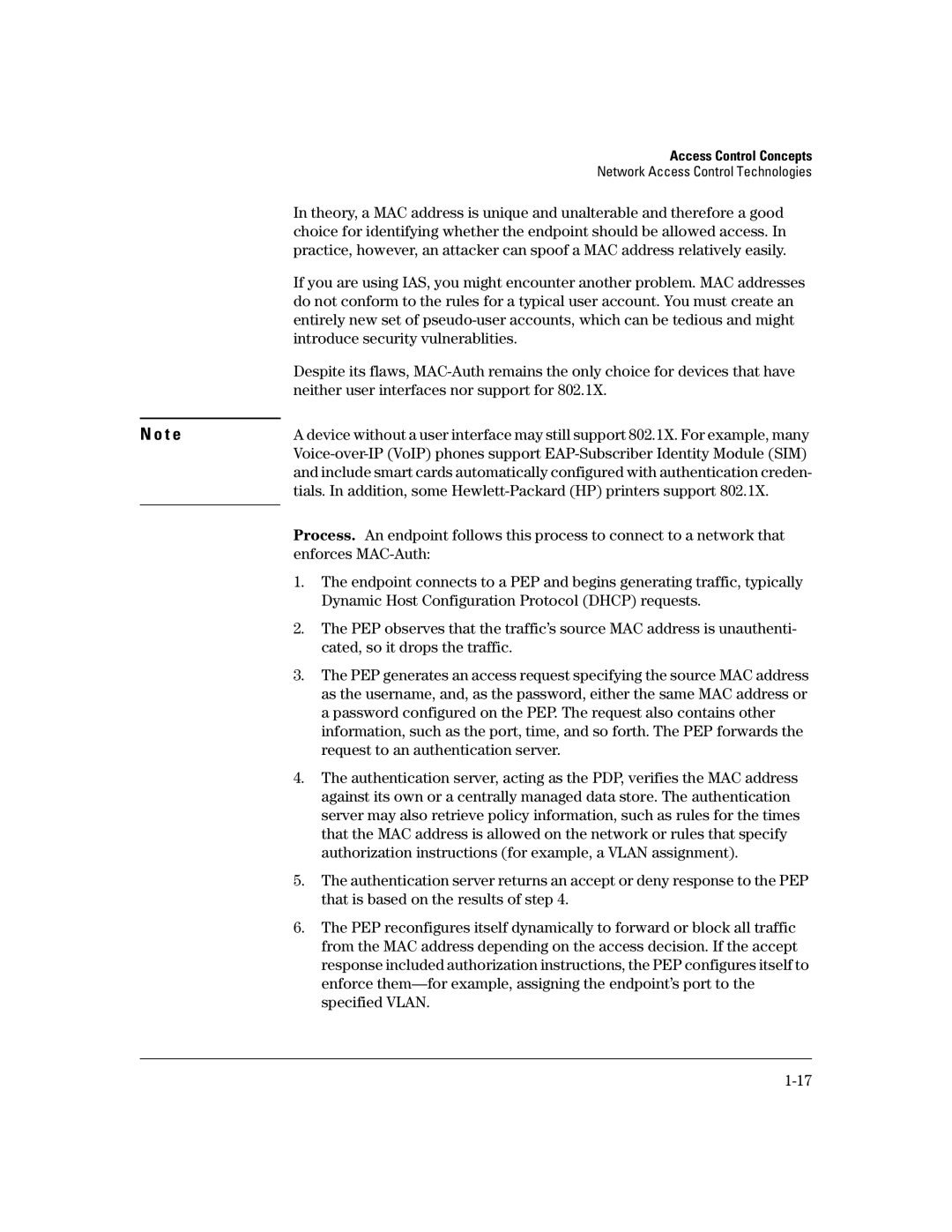Access Control Concepts
Network Access Control Technologies
| In theory, a MAC address is unique and unalterable and therefore a good | |
| choice for identifying whether the endpoint should be allowed access. In | |
| practice, however, an attacker can spoof a MAC address relatively easily. | |
| If you are using IAS, you might encounter another problem. MAC addresses | |
| do not conform to the rules for a typical user account. You must create an | |
| entirely new set of | |
| introduce security vulnerablities. | |
| Despite its flaws, | |
| neither user interfaces nor support for 802.1X. | |
|
| |
N o t e | A device without a user interface may still support 802.1X. For example, many | |
| ||
| and include smart cards automatically configured with authentication creden- | |
| tials. In addition, some | |
| Process. An endpoint follows this process to connect to a network that | |
| ||
| enforces | |
| 1. The endpoint connects to a PEP and begins generating traffic, typically | |
|
| Dynamic Host Configuration Protocol (DHCP) requests. |
| 2. The PEP observes that the traffic’s source MAC address is unauthenti- | |
|
| cated, so it drops the traffic. |
| 3. | The PEP generates an access request specifying the source MAC address |
|
| as the username, and, as the password, either the same MAC address or |
|
| a password configured on the PEP. The request also contains other |
|
| information, such as the port, time, and so forth. The PEP forwards the |
|
| request to an authentication server. |
| 4. The authentication server, acting as the PDP, verifies the MAC address | |
|
| against its own or a centrally managed data store. The authentication |
|
| server may also retrieve policy information, such as rules for the times |
|
| that the MAC address is allowed on the network or rules that specify |
|
| authorization instructions (for example, a VLAN assignment). |
| 5. | The authentication server returns an accept or deny response to the PEP |
|
| that is based on the results of step 4. |
6. The PEP reconfigures itself dynamically to forward or block all traffic from the MAC address depending on the access decision. If the accept response included authorization instructions, the PEP configures itself to enforce
